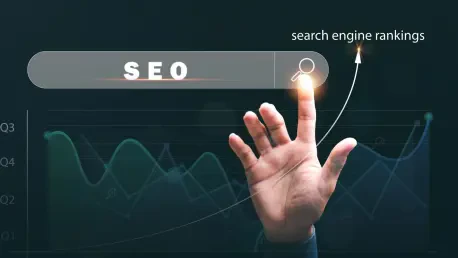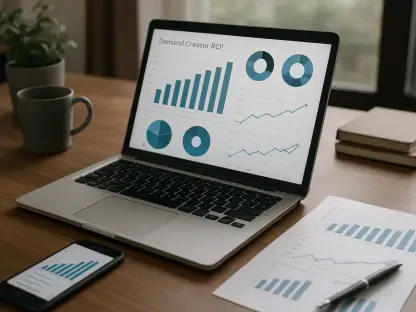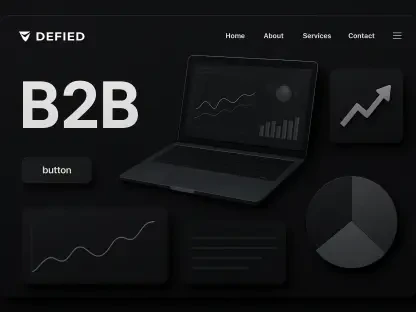This guide aims to help digital marketers and SEO professionals harness the power of Google’s Performance Max (PMax) insights to elevate their organic search strategies. By integrating data from paid campaigns into SEO workflows, the objective is to uncover actionable opportunities, refine content, and align messaging with real user behavior. The following sections provide a clear roadmap to bridge the gap between paid and organic search, ultimately driving better visibility and conversions.
Imagine a scenario where a business struggles to rank for critical keywords despite investing heavily in SEO, while its paid campaigns consistently convert at high rates. The disconnect lies in siloed data—valuable insights from paid ads remain untapped for organic efforts. PMax, Google’s AI-driven campaign tool, offers a solution by revealing search patterns and engagement metrics that can transform SEO approaches. This guide explores how to leverage these insights to address content gaps and optimize user experience.
The importance of unifying paid and organic strategies cannot be overstated in today’s competitive digital landscape. PMax operates across platforms like Search, Display, and YouTube, providing a wealth of data on user intent and behavior. By breaking down barriers between teams and utilizing these reports, businesses can create more targeted, effective SEO plans that resonate with audiences. This guide serves as a practical blueprint for turning PMax data into measurable SEO growth.
Unlocking SEO Potential with Performance Max Insights
Google’s Performance Max campaigns represent a powerful opportunity to enhance SEO efforts by providing a window into real user search behavior. Often, paid and organic search are treated as entirely separate disciplines, with little overlap in strategy or execution. However, this approach overlooks the shared foundation of understanding how users interact with content across channels, a gap that PMax insights can effectively bridge.
By analyzing data from PMax reports, marketers gain access to detailed information about search terms, audience engagement, and creative performance. These metrics reveal not just what users are searching for, but how they respond to various messages and formats. This guide aims to demonstrate how such data can uncover hidden opportunities, from identifying untapped keywords to refining on-page elements for better click-through rates.
The potential to transform SEO with PMax lies in its ability to offer actionable, real-time insights. Instead of relying solely on traditional keyword tools or analytics, marketers can use PMax data to align content with current user trends. This section sets the stage for a deeper dive into specific methods, showing how a unified approach can lead to significant improvements in organic visibility and performance.
Why Performance Max Matters for SEO Success
Performance Max stands out as an AI-driven tool that optimizes campaigns across multiple Google platforms, including Search, Display, and YouTube. Unlike traditional ad formats, PMax uses machine learning to maximize conversions by dynamically adjusting bids and placements. This cross-channel approach generates unique data that holds immense value for SEO, offering a broader perspective on user behavior beyond isolated search queries.
The reports generated by PMax provide critical insights into search term categories, asset performance, audience demographics, and landing page effectiveness. Each of these elements can directly inform SEO strategies, from identifying high-value keywords to understanding which messages resonate most with target audiences. For instance, knowing which ad copy performs best can guide the creation of compelling meta descriptions or headlines for organic content.
Breaking down silos between paid and organic teams is essential to fully capitalize on PMax data. Historically, these teams have operated independently, missing out on synergies that could amplify results. By fostering collaboration and sharing insights, businesses can create a cohesive digital marketing strategy that leverages the strengths of both channels. This integrated approach ensures that SEO efforts are grounded in data-driven decisions, leading to more impactful outcomes.
5 Actionable Ways to Leverage PMax Insights for SEO Growth
Step 1: Expand Keyword Coverage with Search Term Data
PMax campaigns provide a glimpse into the actual search terms users employ, offering a goldmine of information for SEO keyword strategies. By comparing these terms against existing keyword lists, gaps in content coverage become apparent. Addressing these gaps through targeted blog posts or landing pages ensures that a website captures a wider range of user queries, enhancing organic reach.
Identify Patterns for Deeper Content Themes
Beyond individual keywords, PMax data can reveal broader search patterns that reflect user interests or needs. For example, recurring themes around affordability or location-specific services might emerge. Developing content clusters around these themes—such as guides, FAQs, or resource pages—can position a site as an authority on those topics, driving sustained traffic over time.
Map Queries to the Customer Journey
Understanding user intent is critical when expanding keyword coverage. PMax data often highlights whether queries are exploratory or indicate readiness to purchase. Prioritizing content for high-intent queries can yield quicker SEO results, as these users are closer to conversion. Aligning content with different stages of the customer journey ensures relevance and maximizes impact.
Step 2: Refine Messaging Using Asset Performance Ratings
PMax provides detailed feedback on ad copy performance, labeling certain phrases as top performers with ratings like “Best.” These high-performing elements often feature clear, benefit-driven language that resonates with users. Adapting such messaging for SEO elements like page titles, meta descriptions, and headers can significantly improve organic click-through rates.
Create Consistent Brand Voice
Consistency in messaging across paid ads and organic content reinforces brand identity and builds trust with users. If PMax data shows that straightforward, action-oriented phrases drive clicks in ads, incorporating similar tones into website copy can create a seamless experience. This alignment helps users recognize and connect with the brand, regardless of the channel they encounter.
Step 3: Strengthen Local SEO with Audience and Location Insights
PMax data often reveals geographic areas where campaigns perform exceptionally well, highlighting opportunities for localized SEO efforts. If certain cities or regions show high conversion rates, creating location-specific landing pages or updating business profiles with relevant details can capture organic traffic from those areas. This targeted approach ensures content meets local user needs.
Tailor Content to High-Value Audiences
Demographic insights from PMax, such as age ranges or income brackets with strong engagement, offer directional guidance for SEO targeting. While this data is aggregated, it can inform content creation by focusing on themes or pain points relevant to these groups. Adjusting tone, topics, or calls to action to appeal to high-value audiences can improve both relevance and conversion rates.
Step 4: Prioritize Content with Landing Page Performance Data
With features like Final URL expansion, PMax directs traffic to pages it considers most relevant, providing a clear signal of Google’s interpretation of site content. High-performing landing pages identified in PMax reports can be further optimized through refreshed content or enhanced internal linking. This ensures they continue to engage users and support SEO goals.
Optimize Underperforming Pages
Conversely, landing pages that attract traffic but fail to convert warrant closer examination. Issues such as unclear messaging, weak calls to action, or slow load times might be at play. Conducting a thorough audit and making necessary adjustments can turn these pages into valuable assets, aligning user expectations with the site’s objectives for better results.
Step 5: Integrate PMax Insights into Continuous SEO Workflows
The true value of PMax data emerges when it becomes a regular component of SEO strategy. Setting up routines to review PMax reports ensures that evolving search behaviors are captured and acted upon promptly. Collaboration between paid and organic teams during these reviews prevents missed opportunities and fosters a unified approach to search marketing.
Focus on Conversion-Driven Insights
Not all PMax data carries equal weight for SEO purposes. Metrics tied to genuine conversion intent—such as search terms leading to purchases—should take precedence over superficial indicators like impressions. Combining PMax insights with other research tools, while respecting data privacy, creates a comprehensive strategy that drives meaningful adjustments to organic content.
Key Takeaways for Blending PMax and SEO Strategies
- Use search term data to expand keyword coverage and address content gaps.
- Adapt high-performing ad copy for organic messaging to boost clicks.
- Leverage location and audience insights for targeted local SEO.
- Optimize landing pages based on PMax performance reports.
- Build PMax analysis into ongoing SEO processes for sustained improvement.
The Bigger Picture: Unifying Paid and Organic Search Efforts
Integrating PMax insights with SEO reflects a broader trend in digital marketing toward cross-channel collaboration. As platforms and user behaviors evolve, the ability to combine data from multiple sources becomes a competitive advantage. This unified approach allows for more personalized strategies that adapt to real-time trends, ensuring content remains relevant across touchpoints.
Looking ahead, the potential for data-driven personalization will likely grow, even as challenges like data privacy require careful navigation. PMax insights, when used responsibly as aggregated data, offer a way to balance personalization with compliance. Industries ranging from e-commerce to professional services can benefit by aligning content with user behavior revealed through these reports.
This synergy also highlights the need for adaptability in marketing teams. As tools like PMax continue to advance, staying ahead means embracing integration over isolation. Businesses that invest in breaking down silos today position themselves to capitalize on emerging opportunities, creating a more cohesive and effective digital presence.
Final Thoughts: Build a Smarter SEO Strategy with Performance Max
Reflecting on the journey, integrating Performance Max insights into SEO strategies has proven to be a game-changer for many marketers. The actionable steps taken—from expanding keyword coverage to optimizing landing pages—have laid a strong foundation for improved organic performance. Collaboration between paid and organic teams turned isolated efforts into a unified force, driving measurable results.
Moving forward, the next step is to delve deeper into PMax data with a focus on emerging user trends. Experimenting with new content formats based on asset performance insights offers a path to further innovation. Regular analysis of reports should become a habit, ensuring that strategies remain agile in response to shifting search behaviors.
Another consideration is to explore complementary tools that can enhance PMax findings. Combining these insights with advanced analytics or competitor research opens new avenues for growth. By maintaining a commitment to data-driven decisions, businesses can solidify their competitive edge, paving the way for sustained success in the ever-evolving digital landscape.









